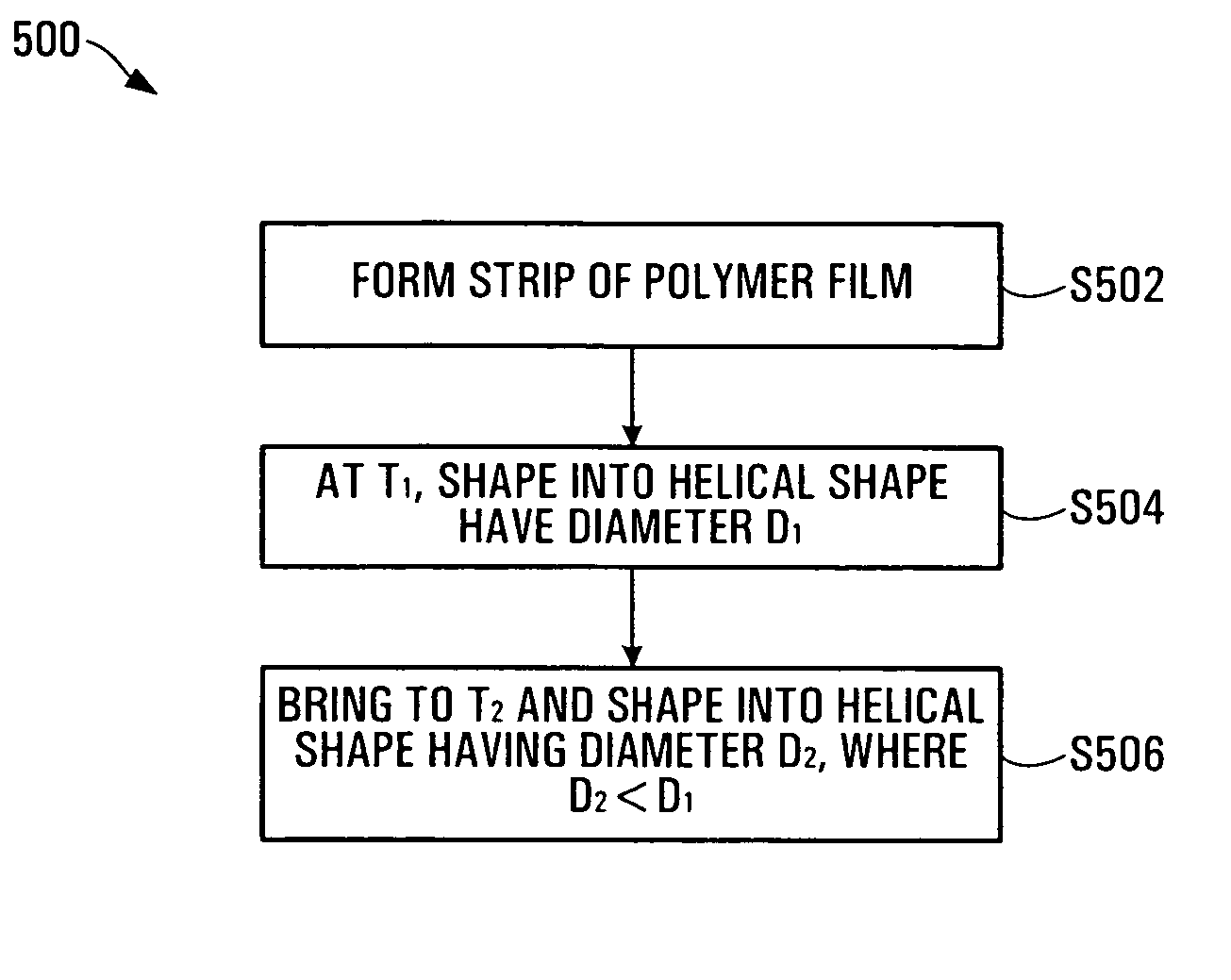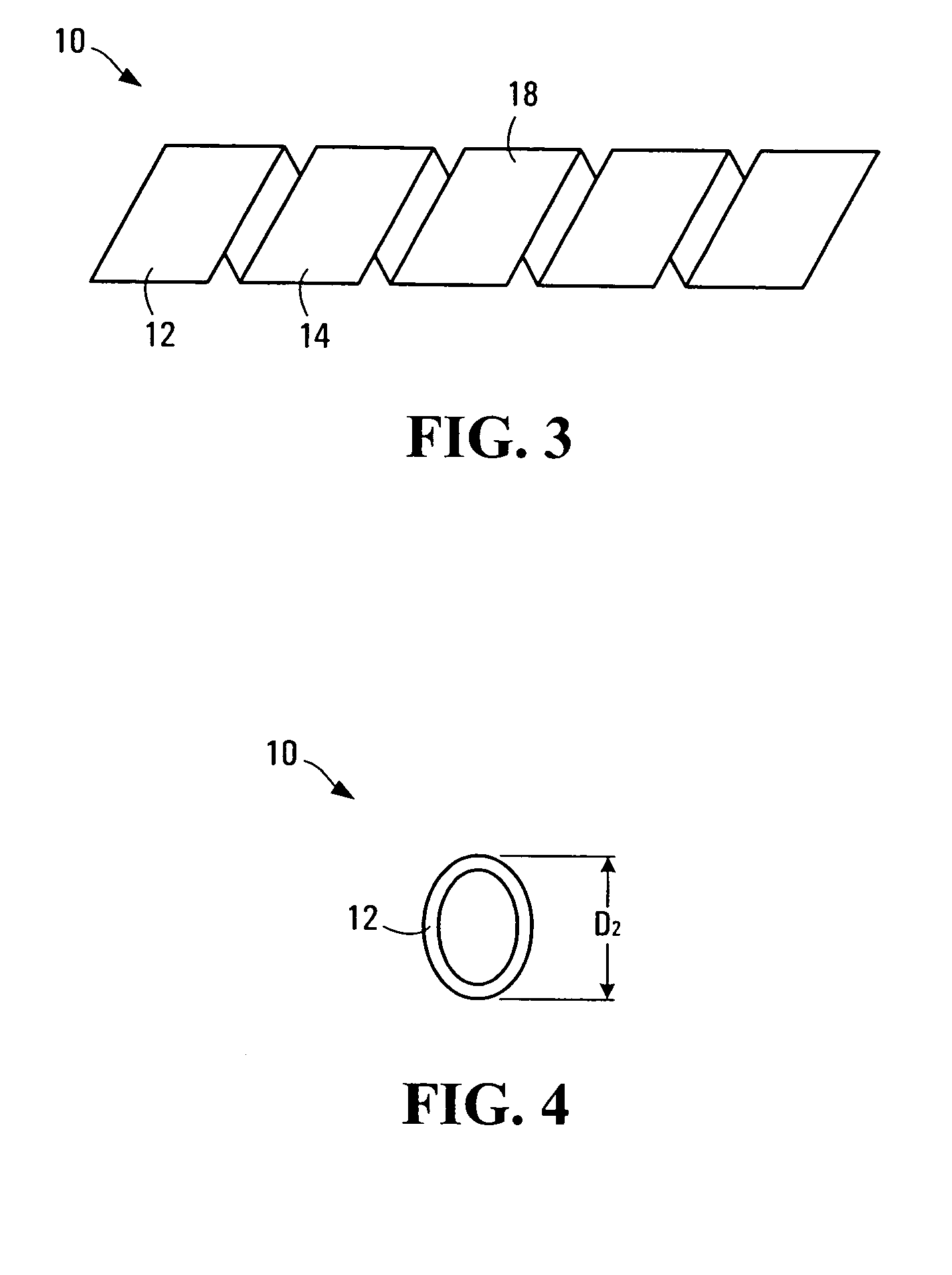Polymeric stent and method of manufacture
a polymer stent and manufacturing method technology, applied in the field of medical devices, can solve the problem of greater force needed to shape, and achieve the effect of maintaining some flexibility and increasing the force needed to shape i
- Summary
- Abstract
- Description
- Claims
- Application Information
AI Technical Summary
Benefits of technology
Problems solved by technology
Method used
Image
Examples
example 1
Manufacture of the Stent
[0110] A strip of polymer film is made by the usual methods (solvent-casting or extrusion). Next, the strip is coiled into a helical shape and set into this shape (helical width is D1) at a higher temperature (T1). The choice of T1 depends on the Tg of the polymer: the general rule is to select T1 such that T1 is from Tg to about Tg+40° C. Once set at the higher temperature (T1), the stent is usually made into a helix of smaller helical width (D2); the ratio of D1 / D2 is generally greater than 1, such as from 6 to 2) at a lower temperature (T2): again, T2 may range from T1 less from about 5 to 80° C.
[0111] At this lower helical width, the stent may be deployed easily using a conventional catheter. Once inside the body vessel or cavity, the stent may be expanded by using both pressure and a raised temperature (this temperature is usually between T1 and T2 and is referred to as T3, i.e. T1>T3>T2). Under these conditions, the stent expands quickly first due to ...
example 2
Generation of Multi-Layered Stent
[0114] The preferred configuration of the stent is a multi-layered helical stent, in which the outer layer(s) are made of an amorphous polymer with a Tg between 40° C. and 60° C., while the inner layer is made of an amorphous or semi-crystalline polymer with a higher Tg (60-100° C.), and crystalline melting point greater than 100° C. This ensures rapid expandability.
[0115] To make a two-layered stent, the following procedure is adopted.
[0116] The inner layer (made from PLA, for example) is made by casting the polymer (with or without drug) from a solution in dichloromethane. A standard solution coater is used for this purpose. Next, a solution of the outer-layer polymer (typically a PLGA) is made in a solvent that does not dissolve the inner polymer that is already cast. An example of such a solvent is acetone. This solution is then cast onto the inner layer polymer, and dried to make the two-layer stent film. The film is then shaped into a helica...
example 3
Stent Expansion
[0120]FIG. 12 is a graphical representation showing expansion rate data of for single-layer and double-layer stents at 37° C.
PUM
| Property | Measurement | Unit |
|---|---|---|
| width | aaaaa | aaaaa |
| temperature | aaaaa | aaaaa |
| oven temperature | aaaaa | aaaaa |
Abstract
Description
Claims
Application Information
 Login to View More
Login to View More - R&D
- Intellectual Property
- Life Sciences
- Materials
- Tech Scout
- Unparalleled Data Quality
- Higher Quality Content
- 60% Fewer Hallucinations
Browse by: Latest US Patents, China's latest patents, Technical Efficacy Thesaurus, Application Domain, Technology Topic, Popular Technical Reports.
© 2025 PatSnap. All rights reserved.Legal|Privacy policy|Modern Slavery Act Transparency Statement|Sitemap|About US| Contact US: help@patsnap.com



